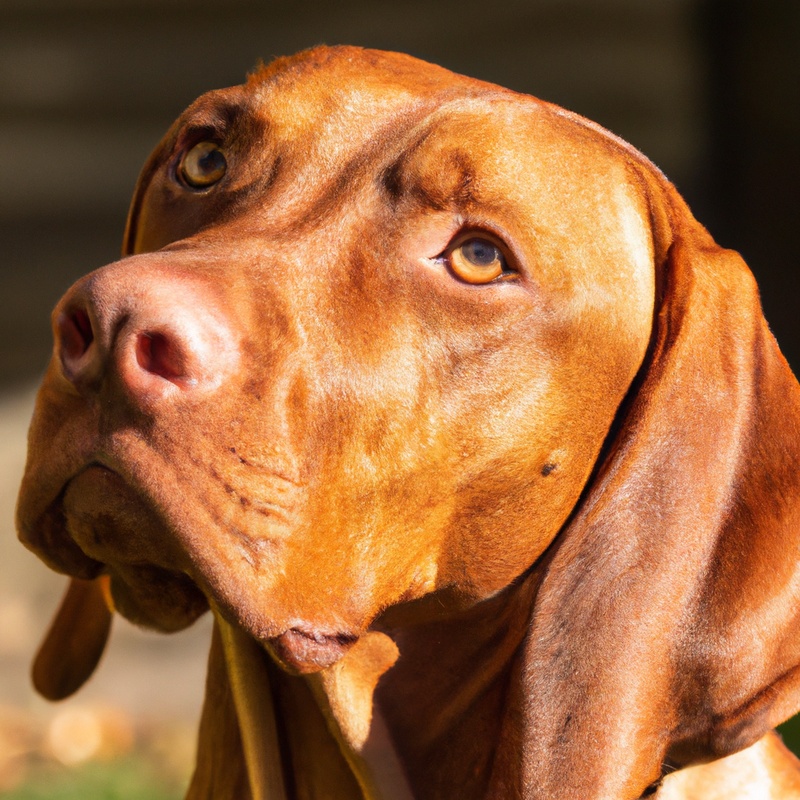What Are Some Common Vizsla Behavior Issues And How To Address Them?
Key Takeaways:
- Separation anxiety is a common behavior issue in Vizslas: crate training and gradual desensitization can help address it.
- Vizslas may exhibit destructive behavior when bored: providing mental and physical stimulation is crucial in preventing this issue.
- Vizslas are prone to excessive barking: proper socialization, training, and positive reinforcement can help curb this behavior.
- Some Vizslas may display possessive or aggressive behavior: early socialization and proper training are important to manage and address these tendencies.
Are you a proud Vizsla owner? These magnificent and energetic dogs have won the hearts of many with their affectionate nature and stunning appearance.
However, like any breed, Vizslas can sometimes exhibit behavior issues that can be challenging for their owners to navigate.
From separation anxiety to excessive barking and destructive chewing, these problems can test even the most patient of dog owners. But fear not! In this article, I’ll guide you through some of the most common behavior issues seen in Vizslas and provide you with practical tips and strategies to address them.
So, if you’re ready to unleash the key to a harmonious life with your Vizsla, let’s dive right in!
| Behavior Issue | Explanation | Solution |
|---|---|---|
| Separation anxiety | Vizslas can become extremely anxious when left alone, leading to destructive behavior. | Gradually desensitize your Vizsla to being alone, provide mental stimulation, and consider crate training. |
| Excessive barking | Vizslas are known to be vocal dogs and may bark excessively if bored or anxious. | Address the underlying cause of the barking, keep your Vizsla mentally and physically engaged, and consider professional training. |
| Jumping on people | Vizslas are energetic dogs and may jump on people as a way of seeking attention or greeting. | Consistently enforce a “four-on-the-floor” rule, redirect their attention to an appropriate behavior, and reward calm greetings. |
| Chewing and destructive behavior | Vizslas have a strong need for mental and physical stimulation, which may result in destructive chewing. | Provide plenty of exercise, interactive toys, and mental stimulation. Redirect chewing behavior to appropriate items and avoid leaving valuable objects within reach. |
| Pulling on the leash | Vizslas are strong and can pull on the leash, making walks challenging. | Teach loose leash walking techniques, use positive reinforcement, consider using a no-pull harness, and gradually increase the duration and intensity of walks. |
Understanding Vizsla Behavior
Characteristics of the Vizsla breed
The Vizsla breed is known for its high energy levels and athleticism. They are intelligent, loyal, and affectionate dogs that thrive on human companionship.
Vizslas require regular exercise to keep them mentally and physically stimulated.
They are eager to please and respond well to positive reinforcement training methods. Early socialization is important to prevent any potential behavioral issues.
Grooming needs for the Vizsla breed are minimal, with their short coat requiring only occasional brushing.
Overall, Vizslas make wonderful family pets for active individuals or families who can provide them with plenty of exercise and attention.

Vizsla as an energetic and affectionate breed
Vizslas are a breed known for their high energy levels and affectionate nature. These dogs love to stay active and require regular exercise to keep them happy and engaged.
Whether it’s a long walk, a game of fetch, or some mental stimulation, Vizslas thrive on physical activities.
Their affectionate nature makes them great companions and they enjoy being close to their human family members. Spending quality time together, giving them plenty of attention and love, helps strengthen the bond between you and your Vizsla.
Importance of early socialization and training
Early socialization and training are vital for Vizslas.
It helps them become well-adjusted and well-behaved dogs.
- Socialization: Introduce your Vizsla to various people, animals, and environments from a young age. This helps them develop confidence and reduces any fear or aggression issues later in life.
- Training: Start with basic commands like sit, stay, and come. Positive reinforcement methods work best for Vizslas. Consistency, patience, and rewards are key.
- Mental Stimulation: Provide mental challenges and activities to keep your Vizsla engaged. Puzzle toys, agility training, and interactive games will help prevent boredom and destructive behavior.
By focusing on early socialization and training, you can lay a solid foundation for a happy and well-behaved Vizsla.

Common Vizsla Behavior Issues
Separation anxiety in Vizslas
Separation anxiety is a common behavior issue in Vizslas.
These dogs form strong bonds with their owners and can become distressed when left alone.
Signs of separation anxiety in Vizslas include excessive barking, destructive behavior, and even self-harm.
To address this issue, it’s important to gradually desensitize your Vizsla to your absence.
Start with short periods apart and gradually increase the time.
Providing plenty of mental and physical exercise can also help alleviate separation anxiety in Vizslas.
Consider crate training and seek professional help if needed.

Excessive barking in Vizslas
Excessive barking can be a common behavior issue in Vizslas. To address this, try the following approaches:
- Identify the triggers: Pay attention to the situations or stimuli that cause your Vizsla to bark excessively. Is it when they’re left alone, when someone comes to the door, or when they’re bored?
- Provide mental and physical stimulation: Vizslas are active dogs that need plenty of exercise and mental stimulation. Make sure they’re getting enough physical activity and provide puzzle toys or training sessions to stimulate their minds.
- Positive reinforcement: When your Vizsla barks excessively, avoid scolding or yelling. Instead, reward them when they are quiet and calm. Use treats or praise to reinforce quiet behavior.
- Train the “quiet” command: Teach your Vizsla the “quiet” command by using a calm voice and giving them a treat when they stop barking. Practice this command regularly in different situations.
- Seek professional help: If the excessive barking persists or becomes uncontrollable, it may be beneficial to consult a professional dog trainer or behaviorist for guidance.
Remember, consistency and patience are key when addressing excessive barking in Vizslas. With time and effort, you can help your Vizsla develop appropriate barking habits.
Destructive chewing behaviors
Destructive chewing behaviors can be a common issue with Vizslas. They have a strong instinct to chew, which can lead to damage around the house.
To address this problem, it’s important to provide your Vizsla with plenty of appropriate chewing outlets, such as chew toys and bones.
Keep valuable items out of reach, and use positive reinforcement to reward good behavior. Providing mental and physical stimulation through regular exercise can also help alleviate excess energy that may contribute to destructive chewing.
Aggression and assertiveness issues
Aggression and assertiveness issues can be common in Vizslas. It’s important to address these behaviors early on to prevent any potential problems.
One way to address aggression is through positive reinforcement training, rewarding good behavior and redirecting negative behavior.
Providing mental and physical stimulation can also help reduce assertiveness. It’s essential to establish clear boundaries, consistency, and proper socialization to ensure a well-behaved Vizsla.
Consulting with a professional trainer or behaviorist can be beneficial in managing these issues.
Addressing Vizsla Behavior Issues
Providing mental and physical stimulation
Providing mental and physical stimulation is essential for a happy and well-behaved Vizsla. There are a few simple ways you can achieve this.
First, engage in regular exercise – Vizslas are an active breed, so a daily walk or jog is a must.
Interactive toys and puzzle feeders can also keep their minds stimulated. Additionally, training sessions and agility activities are great for mental stimulation.
Finally, don’t forget to give your Vizsla plenty of love and attention – socializing with humans and other dogs is crucial for their mental well-being.
Establishing a consistent routine
Establishing a consistent routine is important for your Vizsla’s well-being and behavior.
Here’s how:
- Set regular feeding times: Feed your Vizsla at consistent times each day to establish a routine.
- Stick to a schedule: Take your Vizsla for walks, playtime, and training sessions at the same times every day.
- Provide mental stimulation: Incorporate puzzle toys and interactive games into your routine to keep your Vizsla engaged.
- Maintain a consistent bedtime: Establish a bedtime routine and stick to it, ensuring your Vizsla gets enough rest.
- Be consistent with rules and boundaries: Reinforce consistent behavior expectations to prevent confusion and promote good habits.
By establishing a consistent routine, you can help your Vizsla feel secure, reduce anxiety, and prevent behavioral issues in the long run.
Proper socialization and training techniques
Proper socialization and training techniques are essential for raising a well-behaved Vizsla. Here’s how you can ensure success:
- Start socializing early: Introduce your Vizsla to various people, animals, and environments at a young age to prevent fear or aggression later on.
- Use positive reinforcement: Reward good behavior with treats, praise, and playtime. This will motivate your Vizsla to repeat desired actions.
- Consistency is key: Set clear rules and boundaries, and enforce them consistently. This will help your Vizsla understand what is expected of them.
- Seek professional help if needed: If you’re struggling with training or behavior issues, don’t hesitate to consult a professional dog trainer or behaviorist for guidance and support.
Consulting a professional dog trainer or behaviorist
If you’re dealing with behavior issues in your Vizsla, consulting a professional dog trainer or behaviorist can be a great decision.
They have the expertise and experience to assess your dog’s behavior and provide you with effective strategies to address any issues.
A trainer or behaviorist can work with you and your Vizsla on obedience training, socialization, and modifying problem behaviors.
They can provide personalized guidance and support to help you and your Vizsla have a healthier and happier relationship.
Frequently Asked Questions
How long do Vizslas typically live?
Vizslas typically live for around 10 to 14 years. However, it’s important to note that individual lifespan can vary.
Proper nutrition, regular exercise, routine veterinary care, and a loving environment are key factors that contribute to a longer and healthier life for your Vizsla.
Regular check-ups with your veterinarian and addressing any health concerns promptly can help ensure your Vizsla lives a happy and fulfilling life.
Can Vizslas be left alone for long periods?
Vizslas are social and affectionate dogs, and they don’t do well when left alone for long periods. They thrive on human companionship and can become anxious or bored when left alone.
It’s important to ensure that they have plenty of mental and physical stimulation when you’re not around.
Consider providing them with interactive toys, puzzle games, and a comfortable space where they feel secure. You may also want to hire a dog walker or enlist the help of a friend or family member to check in on them during the day.
Do Vizslas get along well with children and other pets?
Vizslas are generally a good fit for families with children and other pets.
They are known for their friendly and affectionate nature.
However, it’s important to supervise interactions and teach children how to properly handle and respect dogs.
Proper socialization from an early age can help Vizslas get along well with other pets in the household.
Regular exercise and mental stimulation are also essential to prevent any behavioral issues that may arise.
Are Vizslas prone to any health issues?
Vizslas are generally a healthy breed, but like any other dog, they can be prone to certain health issues.
Some common health issues in Vizslas include hip dysplasia, epilepsy, allergies, and eye problems such as progressive retinal atrophy.
It’s important to work with a reputable breeder who screens their dogs for these health issues.
Regular veterinary check-ups, a balanced diet, exercise, and proper grooming can also help keep your Vizsla healthy and happy.
Final Verdict
Understanding Vizsla behavior is crucial for owners to provide the best care for their furry companions. Vizslas are energetic, affectionate, and intelligent dogs, but they can also exhibit common behavior issues such as separation anxiety, excessive barking, destructive chewing, and aggression.
To address these issues, providing mental and physical stimulation, establishing a consistent routine, and implementing proper socialization and training techniques are essential.
Consulting a professional dog trainer or behaviorist can also be beneficial. Overall, by addressing these behavior issues promptly and effectively, Vizsla owners can ensure a happy and well-adjusted companion for many years to come.







